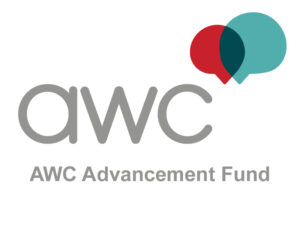Spreading the word about news and other noteworthy developments at your company or with the organizations you work with can be as easy as writing a press release. WIth many of today’s newspapers and other media outlets short-staffed, there’s a good chance of having a professionally-written news release published either verbatim or with minimal changes made. A news release is also a great tool for news reporters in search of story ideas to cover or expand upon. Here are some guidelines for writing and distributing a release, whether you’re a seasoned professional, or just starting out.
What is a News Release?
A press (or news) release is a one- to two-page written document describing newsworthy events, written in a matter of fact, easy-to-understand format. “AP Style,” which uses proper grammar, spelling and punctuation, is the preferred format for news releases.
Elements of a news release include a catchy 1-2 line headline or headline and subhead and your contact information on the top of the page. The story portion of the release should start with a dateline (City, State) at the beginning of the first paragraph. Write in the ’inverted pyramid’ style, in which the first paragraph features the most important information (who, what, where, when, why, how) and additional paragraphs expand upon the main topic in more detail Model the release after a print news story, using shorter paragraphs and a few quotes from people who can elaborate on the story. (Click here for an example)
Why Send a News Release?
Free publicity! News coverage (editorial) is considered more valuable than display advertising and writing a news release only requires a small investment of time and some creative thinking. What can you write about? New products or services, events, and hiring new team members, for starters. Company executives speaking at conferences, and company/organization milestones could also be good topics. When written correctly, your news release can be published in print and/or online publications. It’s also great content to share on your website. In addition to the short-term goal of getting your information out to the media and the public, news releases can also serve a long-term goal as a way to introduce yourself and your company to journalists as someone with expertise in a particular subject.
Key Components of a News Release
- Headline – make it attention grabbing (not sensational)
- Media contact information (phone, email)
- Dateline (City/state)
- Written in AP Style: Similar to newspaper stories, with proper grammar, spelling and punctuation
- Boilerplate “about” information at bottom (standard information about your company, group, event)
Writing a News Release
- Find your angle (where is the news? Why is this news? Why should I care?)
- Write your headline
- Strong opening paragraph
- Write in inverted pyramid style (most important information on top)
- Make sure you include all critical information
- Include 1-2 quotes from newsmakers
- Check for errors — grammar, spelling, facts, punctuation
When and Where to Send Your News Release?
- Early in the week (unless it’s bad news or news you want buried)
- Two to three weeks in advance
- Target relevant publications, newspapers, industry journals, bloggers, online sites, specific journalists (limit to relevant/local publications who have a reason for covering)
- Send in both PDF and docx file formats. Check the website of the news organizations you are contacting, to look for guidance for submitting news releases (some specifically ask for .docx file format, which is easy to copy and paste, so I typically send both a .pdf and .docx version).
Photos/Media Kit Information
Sending large attachments can sometimes make your email message wind up in the spam filter. It’s good to have a photo or photos available to go with the news release. Sometimes I will attach one photo (under 1 mb in size) with the news release. In the body of the email you can mention high resolution images are available upon request, or you can make a Dropbox or Google folder available for the reporter to access directly, just share the link. Tip: Set permissions on the folder that will allow ‘anyone on the internet with the link’ to access the folder.
About the author

Lisa Osborn is a radio broadcaster and voice-over narrator for audiobooks, telephone systems and transit agencies. She is president of the Santa Barbara, CA chapter of AWC and news director at KCSB FM, the college/community radio station located at the University of California Santa Barbara (UCSB).

